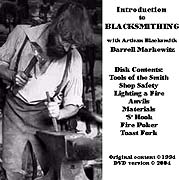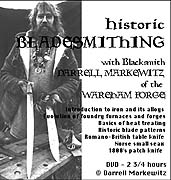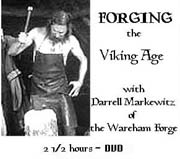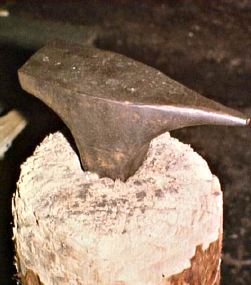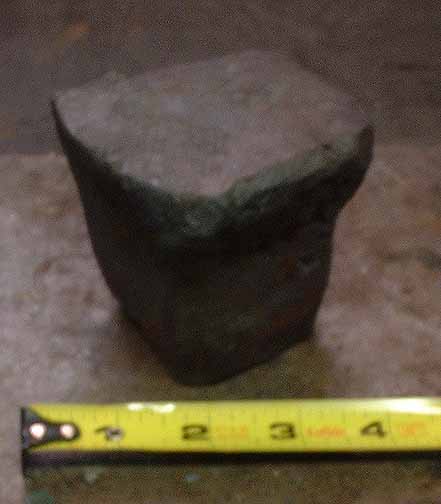We so often find reasons to complain, but rarely pass along complements for things done right.
I thought I'd mention something done recently by Makita Power Tools which I was quite happy with.Most of my hand power tools in the Wareham Forge are made by Makita. The majority of these are in the 'very good home' quality level, individual tools in the $75 - $150 range. I have always been impressed by the overall desgin and eronomics of the tools. I have relatively small hands, so have often found the standard 'America' tools a bit too large to comfortably grip - and thus harder to control. Maybe because Makita came out of Japan, I have found they just plain fit my hands better. There was a noticable quality difference for the price as well. For working tools, I always to purchase based on design and quality - not mere price. Over the years I have found Makita has proven excellent value and durability.
Quite a few years back I purchased a model 9527PB, 4 1/2 inch angle grinder. As an intermediate level tool, the cost was about $100 (but I do think I got it on sale for about $75).

6.4 Amp, 10,000 Rpm, Weight 3.9 lbs.
The reason I purchased that model was that unlike everything else available at the time, it had a long paddle type on off switch. Once a central trigger was depressed and the unit was on, gripping the body any place around the slim housing kept the tool running. This proved of great utility when grinding the wierd angles and possitions needed when cleaning up welded artistic smithing work, especially on larger architectural projects. This grinder was also the lightest of all the units available in its power class (most small grinders are 5 amp).
The unit did sterling work in my shop for over a decade. I was extremely happy with its performance, and really did love its ease of use.
No tool lasts forever, especially in a blacksmith's shop. Eventually the bearings gave out, and I needed a replacement. Trying to put my years of experience to work (??) I decided not to consider price - but shop for features and ease of use. I looked at everying available in general retail stores, shopping in Owen Sound. So that meant Canadian Tire, Home Depot, Home Hardware, TSC... I spent a whole afternoon, making the circuit and then returning to finally make a purchase.
Right off the start, I found out the 9527 was no longer in production. Damn! I did look at the
DeWalt, but it had a strange kind of flip up small trigger that sure looked like it would be prone to break. I also was *attempting* not to purchase anything made in China. (Another possible rant?) Anyway, that was to prove impossible, as now ALL the manufacturers (except maybe
Milwalkee) have their products built in China.

6.0 Amp, 11,000 Rpm, Weight 3.1 lbs.
What I ended getting was a Makita combo pack with a model
GA4530K 'slimline' grinder and a 5/8 hammer drill. I paid just under $100 for the package. Obviously the package was intended to promote the DRILL, not the grinder. (I had been considering replacing my 20 year old Makita 3/8 electric drill anyway, so thus the combination purchase. As an aside, I have been extremely happy with the handling and performance of the drill -
model HP1621K.) The 4530 had the smallest diameter housing of all the available grinders in its class, which is why I chose it. It is also slightly more powerful, at 6 amps (over the standard 5 amps).
Now the negative. The GA4530 was certainly NOT a good replacement for my 9527. Right off the get go, it lists at half the price, and of course that difference in cost needed to be reflected some place. It has the standard arrangement of thumb switch on top of the housing used for most of the smaller angle grinders. The diameter of the housing was actually larger than the older model (so much for slim line).
Most importantly, the tool proved just NOT to be durable. Ten months after the purchase, with regular shop use, the unit failed. Failed big time. The windings shorted out, melted the interior plastic mounts, which in turn shattered. All in about five seconds. Kind of like blew up.
Given the care I had taken in selecting this tool in the first place, I was NOT happy. I was also under time pressure on a major commission, so had to make a special trip down to Orangeville (75 km each way) to purchase a replacement. This time I spent an hour on the internet, taking a look at what was on offer at my possible retail choices. I decided that money was NOT going to be a factor, but durability and hand feel the only determination points.

7 Amps, 10,000 RPM, Weight: 4.7 lbs.
What I ended up purchasing was this one, the
Rigid model R1005 'Slimline' Now, I have to admit that I really don't like Home Depot. Note that I did check all the other retail outlets first, starting with Home Hardware, which as my local McDonald's Home Hardware in Dundalk, I could not LIVE without. I decided to purchase the Rigid for two reasons. First, it was by far the most comfortable in my hand, despite the 25 % increase in weight over my earlier tools. This is because of an innovative design, which extends the drive shaft to place the motor behind your hand. You grip the much smaller diameter drive shaft, with the grinding head assembly balanced by the weight of the motor. This does make the tool considerably longer. I have yet to use the grinder for a long work session, or on a complex assembly, but it does seem comfortable to use so far. The second point was the warrenty. Three years total replacement, lifetime repair on parts. All the other manufacturers offer one year. We shall see.
But this is a story about Makita.
With nothing to loose, I figured I might as well attempt a warrenty challenge. As per the instructions, I copied off my original reciept (kept thanks to business tax records), boxed up the failed grinder, added an explination note, and mailed the lot off to the address in Mississauga. Cost me $12, figured the worst would be the loss of the money. I decided from the start that I might cover return shipping, but certainly would not apply any funds to repair of that unit. I mailed the package off about the 10th of December
About five weeks later (and this WAS over the holidays) I got a phone call from Makita Canada. A bit of a gruff voice, which threw me a bit a first:
"I've got good news and bad news, what do you want first."
"err - What about the bad news?"
"I've got your damaged grinder here, I can't send you a replacement of that model."
"Ok, whats the good news?"
"I looked the damage, and there is no way it should have happened. So I'm going to send you a new model as a replacement, free of charge."
What came a couple of days later was a model 9525. It is a 5 inch version, with a top mounted thumb switch. (I can't find an exact image.) It appears to be a 'last years model' (not listed on the Makita Canada web site) but was
brand new. The specifications are 5 Amps, 10,000 RPM, 3.1 lbs. The grinder came packaged with a bonus
14 inch tool bag. (I'd guess thats to balance the slight reduction in power from the damaged unit to the replacement.)
Good for them.
Not expecting anything, getting a brand new replacment unit is just bonus. It was a pain having to replace a needed tool in the middle of a job. The end result is now I have two working angle grinders in the shop (actually three, as I do have a cheap ass Benchmark with a wire brush cup mounted for clean ups).
Thanks Makita Canada. Although all your tools are now made in China (instead of Japan) with all that implies, you fully backed your warrenty. Actually past what I expected.
